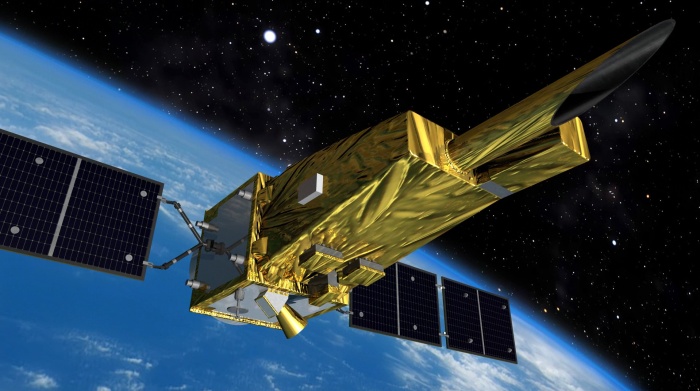Extreme Ultraviolet Imaging Telescope Loaded onto "Hisaki", Spectroscopic Planet Observatory for Recognition of Interaction of Atmosphere (SPRINT-A)
September 20, 2013
"Hisaki", the spectroscopic planet observatory for recognition of interaction of atmosphere (SPRINT-A), developed by the Japan Aerospace Exploration Agency (JAXA), was launched into space aboard Epsilon-1 on September 14, 2013.
SHI was involved in the manufacture of the observation equipment on this satellite.
"Hisaki" is the first space telescope in the world dedicated to planetary observations, intended to remotely observe Venus, Mars, Jupiter and the like from an artificial satellite orbit revolving around the Earth. The purpose of the satellite is to resolve changes in the mechanism for the outflow of atmosphere and fluctuations in the plasma environment, due to interactions with solar wind, by observing the extreme ultraviolet rays (EUV)(*) arriving from such planets.
The observation equipment SHI manufactured is used for the spectroscopic analysis of extreme ultraviolet rays and their consolidation to detectors, as well as for performing highly accurate information processing for satellite attitude controls. The temperature difference between surfaces exposed to sunlight and those not exposed, exceeds 200°C in outer space. Since the framework deforms under the effects of heat, the observation equipment requires elaborate positional and heat controls. SHI employed control technologies with strong track records to maintain the positional accuracy of the telescope and the detector, which are about 1.6 meters apart, to 0. 2 milimeters at all times.
SHI has made numerous technical contributions to space developments in the past, including taking part in the manufacture of sample collection equipment on "Hayabusa", an asteroid explorer of JAXA. SHI will continue to make such contributions, while striving to improve the technological capabilities of SHI.
* Extreme ultraviolet rays: Ultraviolet rays with particularly short wavelengths. These rays are optimally suited for observing the outflow of atmosphere from planets however, observations using EUV are impossible on the ground as they are absorbed by the atmosphere.
Hisaki satellite (CG) performing planetary observations (source: JAXA)

